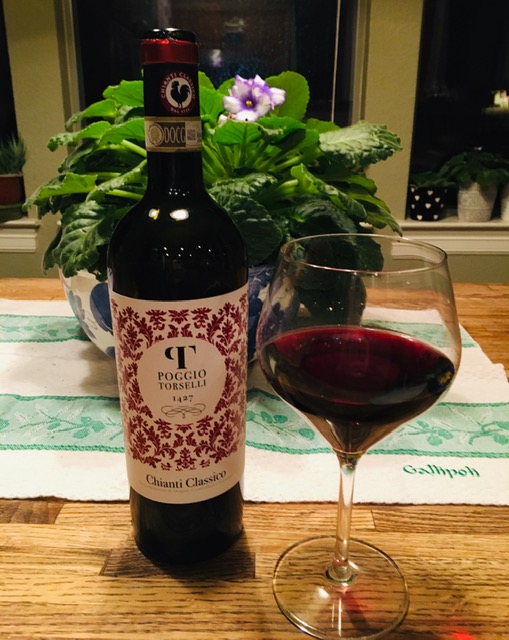Poggio Torselli, in San Casciano, Val di Pesa, just south of Florence, is on an estate that dates back to 1427. The estate has a lively history of ownership which includes the families of the Antinoris, Capponis, Corsinis and Machiavellis. It’s now owned by the Zamparini family, who purchased it over 20 years ago.
Since 2017, Poggio Torselli’s wine production has been supervised by Eduardo Colapinto, who studied viticulture and oenology at the University of Udine, followed by more study and work in Argentina, New Zealand and Australia. All of this resulted in his commitment to organic and biodynamic production.
After much work on the soils, and replanting of the vineyards, today Poggio Torselli has 24 hectares of grapes, and produces 50,000 bottles of wine each year.
My interest in this winery was piqued by a recent press release from my friend Irene Graziotto at the PR firm Studio Cru about Poggio Torselli’s wines. At my request, Irene arranged for Poggio Torselli to send samples of their wines, since the Covid-19 pandemic has made travel to Italy (and most other places) impossible at present.
And now let us see the results of the tasting, which occurred alongside my wife’s excellent cuisine!
The first wine we tasted was a 2018 Toscana Rosso Bizzaria IGT, a 100% Sangiovese 13.5% alcohol offering made from hand harvested grapes. Alcoholic fermentation was done in stainless steel tanks with maceration on the skins for about 20 days at controlled temperatures never higher than 26°C. The skins were soft pressed and the wine was aged in both stainless steel tanks and used oak barriques, with the lees preserved as long as possible. The wine was gently fined and filtered before bottling. The Bizzaria was served with Italian sausage-stuffed ravioli in an Italian sausage and tomato Salsa (sauce). The wine was ruby in color with a fruit nose. It finished medium long and very smooth. It was very easy to drink and I rated it a 90.
Our second wine was a 2017 Poggio Torselli Chianti Classico DOCG, a 100% Sangiovese, 15% alcohol offering made from grapes from three separate estate vineyards. Again the grapes were hand picked and fermentation with indigenous yeasts was done in stainless steel tanks with maceration on the skins at temperature control (max 26°C) for 20 days. Malolactic fermentation occurred in wood, followed by at least 12 months’ aging in 1500-liter Slavonian oak barrels. Gentle fining and filtration was done before bottling. The Chianti Classico was served with breaded and fried melanzana, accompanied by linguini in a tomato crème sauce. The wine was ruby in color with a very light fruit nose. It finished medium long and very smooth. I liked this excellent example of a Chianti Classico and rated it a 92.
Last, and certainly not least, we tasted a 2016 Poggio Torselli Chianti Classico Riserva DOCG, another 100% Sangiovese grape 14% alcohol offering. The Riserva was made from 20-year-old vines with hand selected and picked grapes. The same regime as was used in the Chianti Classico above was followed for both fermentations. This wine aged for 24 months in French oak barrels of 225 to 1500 liters, with lees preserved as long as possible and frequent battonnages. Again, gentle fining and filtration was employed before bottling. The Riserva was served with steak, roasted potatoes and Swiss chard. This wine was a dark ruby in color with a very light fruit nose. It finished very long and extremely smooth. It was a great pairing with steak and an elegant companion for the meat. I really liked this Riserva and rated it a 93/94.
I’m very impressed with the work of wine maker Eduardo Colapinto. These wines were excellent examples of Chianti Classico.

A Poggio Torselli Chianti Classico. PHOTO: Terry Duarte.
Some of the historical information above comes from an article by Carlotta Iarrapino, translated by Gillian Shaw.
Thanks go to Poggio Torselli for providing the opportunity to taste these wines.




